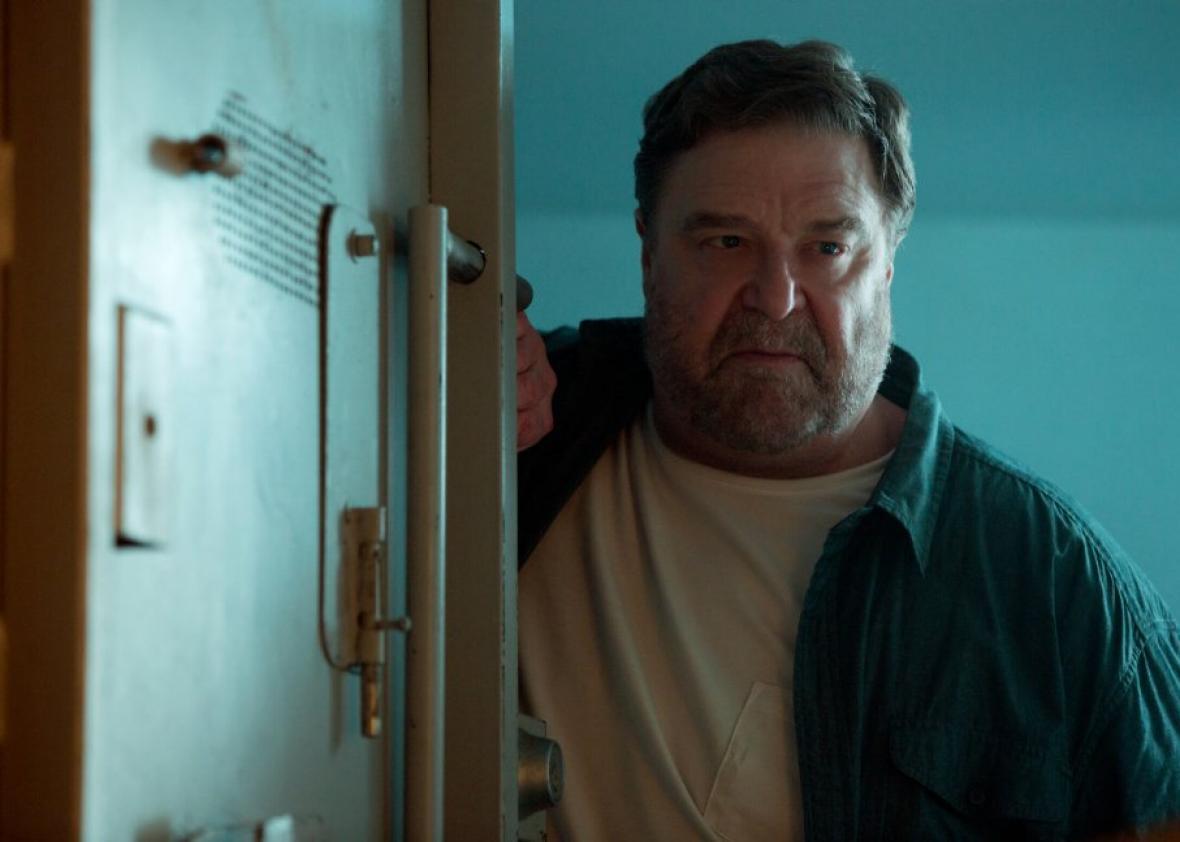10 Cloverfield Lane was the highest-grossing American movie in its opening weekend among non-children, earning $25 million. (Zootopia was No. 1.) That’s an impressive debut for a movie that only started publicizing itself two months ago, features a low-single-digit number of on-screen actors, and involves a quasi-sequel plot that’s at most vaguely related to a movie that came out eight years ago and was itself not all that big of a box office hit. Given these realities, it seems possible that this is a movie that might be successful for the novel reason that it’s actually good. Indeed, it’s got a 90 percent rating on Rotten Tomatoes and has already become an object of obsession on sites where film geeks gather online. It’s a hit with both mainstream critics and cult fans.
What makes 10 Cloverfield Lane so interesting? Reviewers have praised its stellar performances and tight direction, praise that is deserved, but I’d like to highlight what I think makes director Dan Trachtenberg’s film unique: A combination of suspense so elemental that most of the movie could easily be performed onstage with the kind of absurd humor you might expect to see on FX or Comedy Central. 10 Cloverfield Lane, you might say, belongs in the genre of Surreal Dry Humor/Extreme Violence Comedy-Thrillers. (It’s a very small genre, yes—so small, in fact, that I think it includes at most two movies, a few scenes in other films, and some comedy sketches.)
The basic premise of 10 Cloverfield Lane—three people live in a suburban-home-styled bunker during what may or may not be the apocalypse—is, as you might expect from a J.J. Abrams-affiliated project, Spielbergian, combining fantastical science fiction with domestic drama. But while Spielberg’s characters tend to be endearing and their interactions earnest, 10 Cloverfield’s are ridiculous and absurd. John Goodman’s enigmatic Howard could be someone’s weird but harmless dad; there are scenes of deadpan comedy involving his completely ingenuous attention to restroom etiquette, spaghetti sauce, and Pretty in Pink. Emmett, played by John Gallagher, Jr., is a goofball out of Dazed and Confused who has kind of a blithe shrugging attitude toward the end of the world and delivers the movie’s best line, an aside about Howard having made a pilgrimage to Waco, Texas. (Uh, it’s funny in context, trust me.) These scenes are overlaid with and interrupted by tension and sudden violence, and the movie wrings as much ridiculous incongruousness from the subtext (brain-melting tension) and text (awkward conversation about dinner and board games) of its scenes as possible.
Putting jokes in a horror movie isn’t a new idea, of course, but 10 Cloverfield Lane doesn’t feel like Evil Dead, Scream, or Shaun of the Dead; its humor isn’t parody, caricature, or slapstick. The movie does have some predecessors, though—for one, it reminded me of the moments of banter between Richard Jenkins and Bradley Whitford’s characters in Cabin in the Woods, a movie whose co-writer/director has also worked with Abrams. In that film, Jenkins and Whitford play bickering, bored bureaucrats who, it becomes clear, are also orchestrating a demonic, graphic monster attack against several attractive young adults on a weekend vacation. And of course you can’t talk about quirk and violence without mentioning several classic Quentin Tarantino scenes; though Tarantino’s movies don’t exclusively work in this register, the wry/scary spirit of 10 Cloverfield Lane has a lot in common with Michael Madsen dancing whimsically to “Stuck in the Middle With You” while torturing a police officer in Reservoir Dogs, Samuel L. Jackson praising Brett’s burger before shooting him in Pulp Fiction, and Christoph Waltz goofily enjoying of a glass of milk and a tobacco pipe during the early confrontation with the French farmer in Inglorious Basterds. Two artists whose work approaches 10 Cloverfield/Cabin territory from the other direction, meanwhile, are comedians Key and Peele, who have a number of classic sketches in which typical comedic situations escalate into demented-violence and/or nightmare scenarios which are executed with a cinematic level of quality and commitment.
Of course, what Key and Peele are trying to do is amplify their humor by playing with elements of suspense; what 10 Cloverfield Lane does is amplify its suspense by playing with humor and surreality. The movie’s shifts in mood and hints at genre-bending (is it an alien movie, a kidnapping movie, or neither?) make its gruesome moments and twists hammer home even harder. It’s easy, while you’re busy laughing, to fail to notice that something terrible is sneaking up on you.
